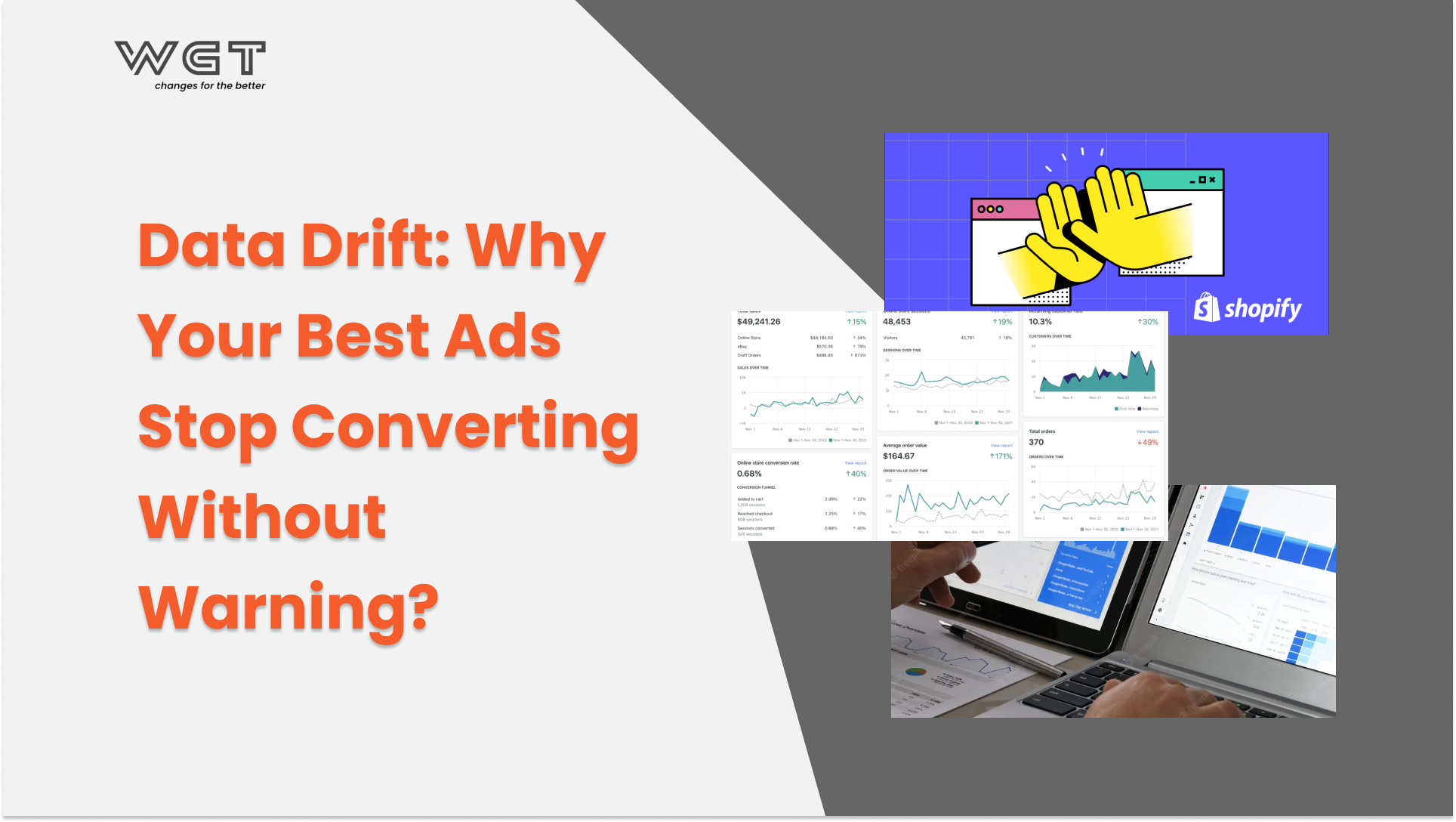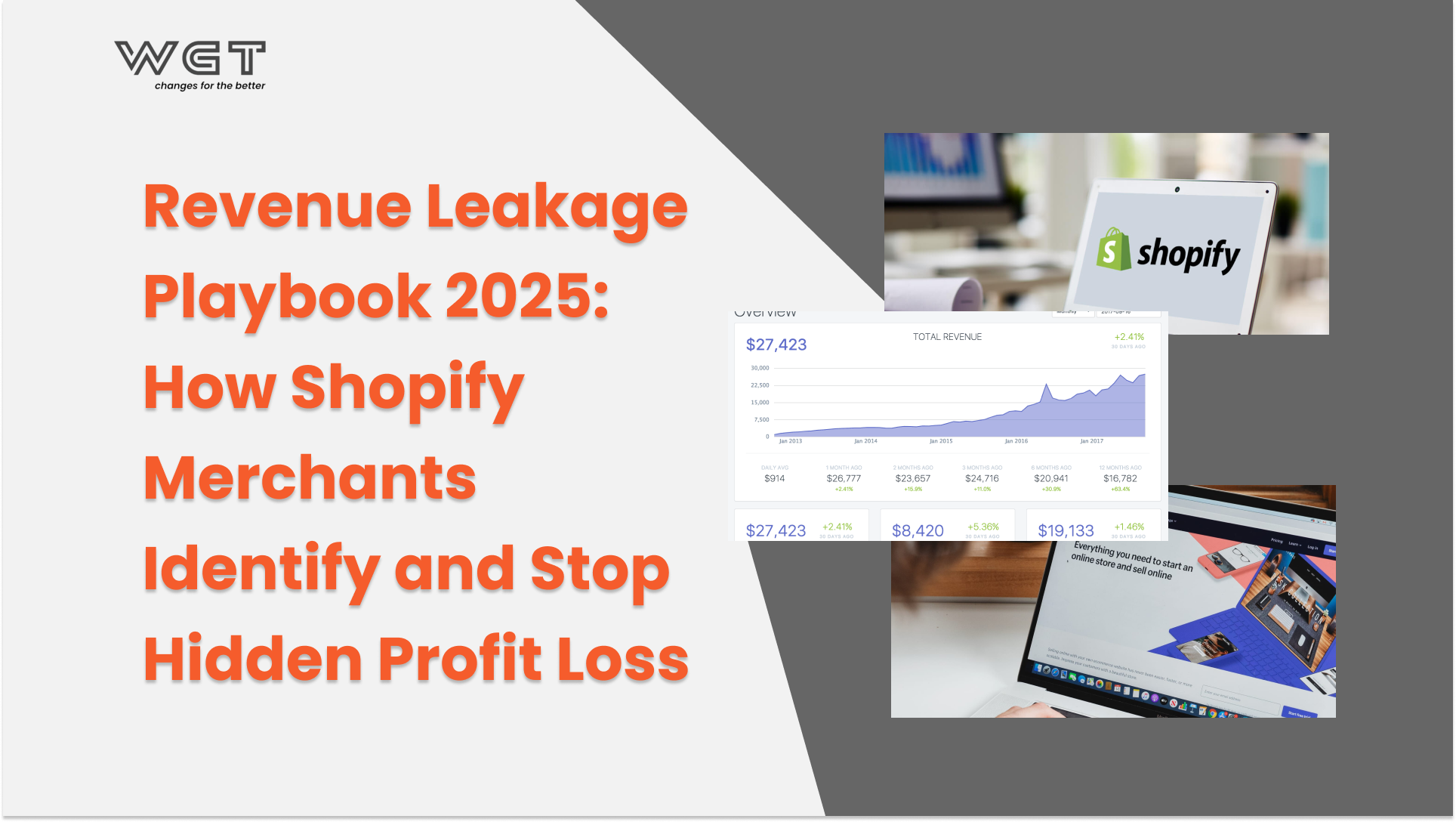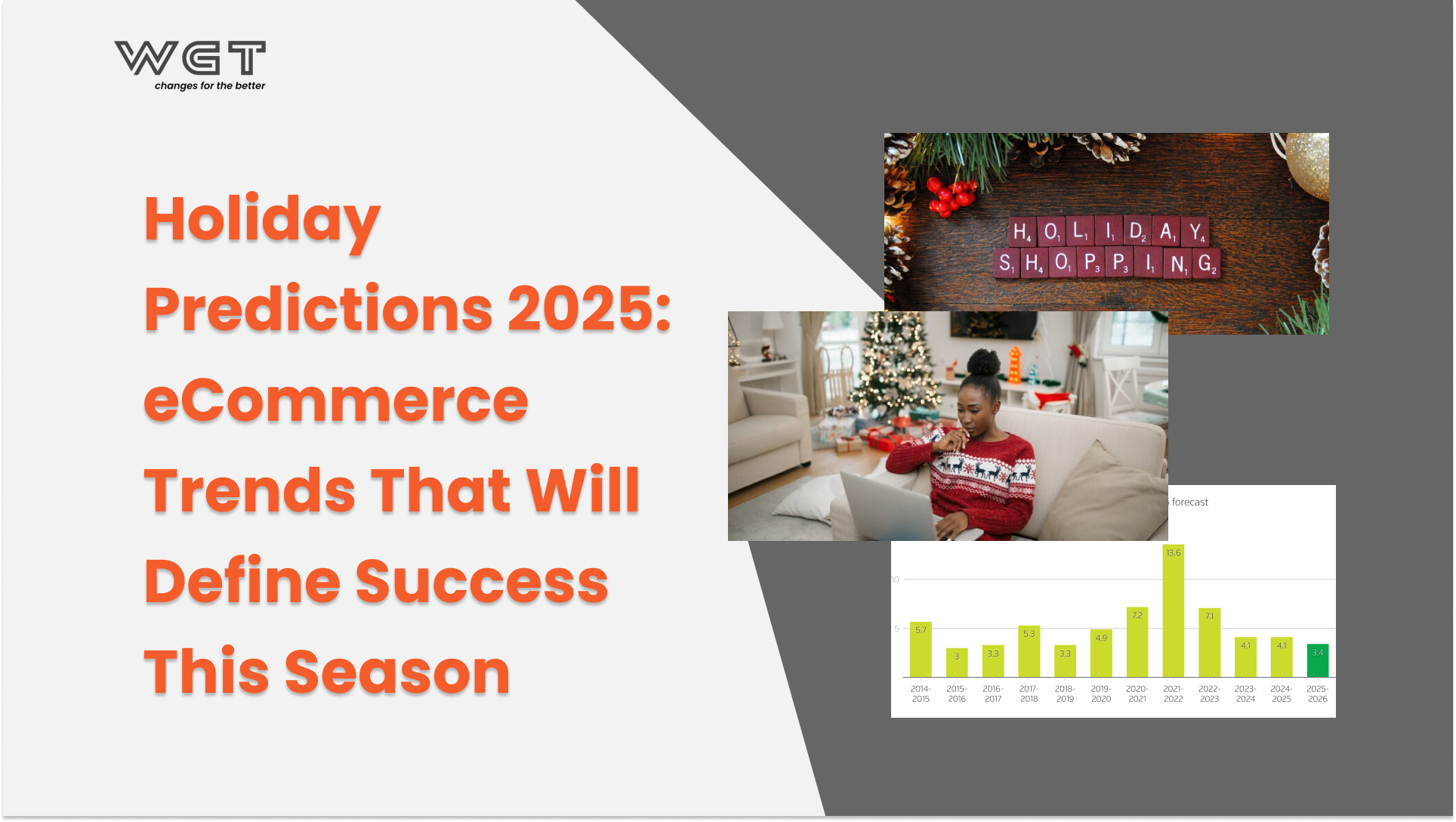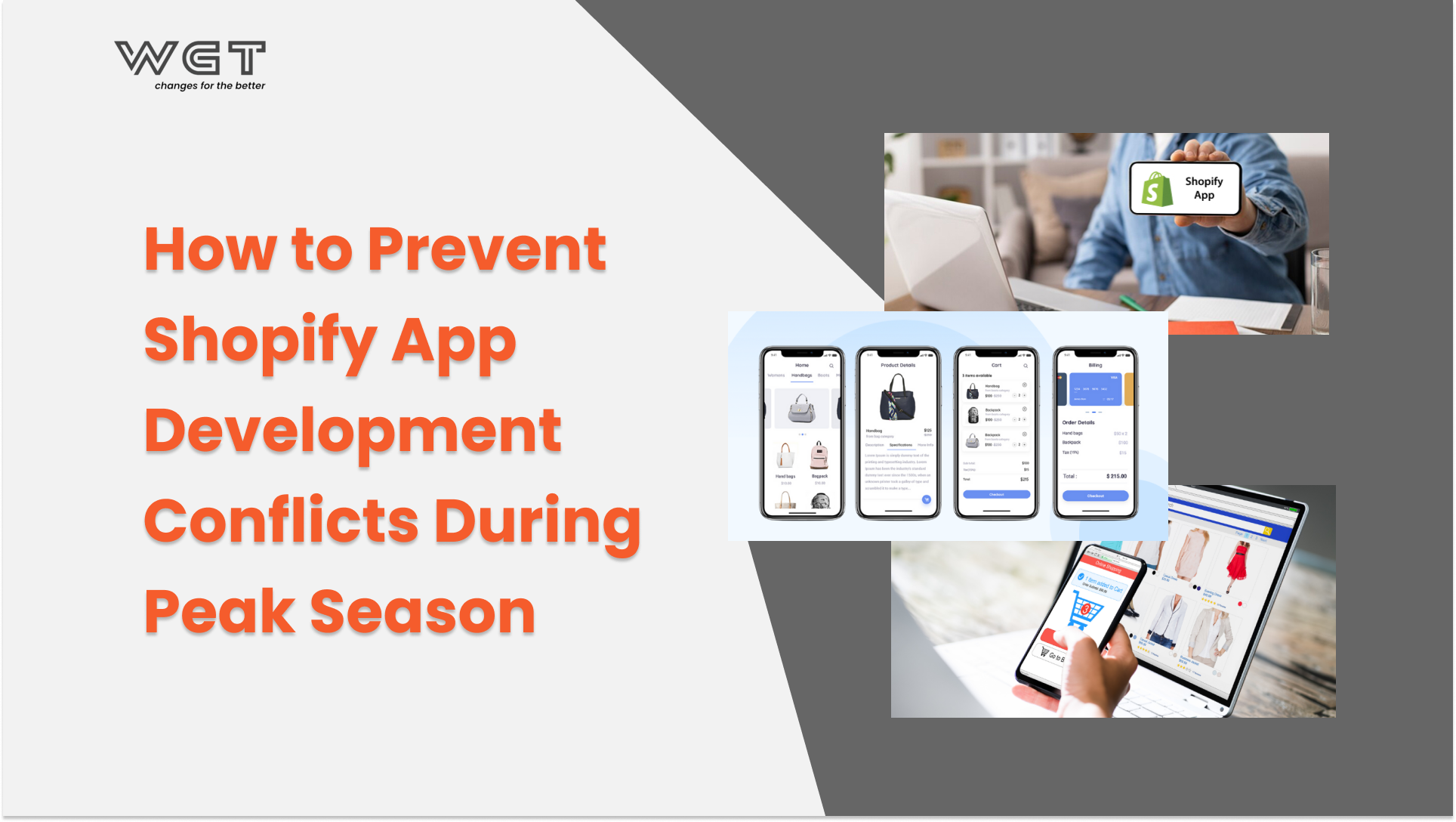In today’s online market, content marketing for eCommerce websites is no longer a “nice-to-have”, it’s a necessity. With ad costs rising and consumer attention spans shrinking, eCommerce brands need a sustainable way to attract, engage, and convert customers. That’s where content marketing steps in.
By delivering value-driven content across blogs, videos, emails, and social media, eCommerce businesses can build trust, boost visibility, and guide buyers along their journey—without relying solely on paid ads.

Statistics show that eCommerce companies that prioritize content marketing see 6x higher conversion rates compared to those that don’t. In fact, content-driven brands experience steady long-term growth through organic traffic and returning customers.
In this comprehensive guide, we’ll break down the five core strategies that successful ecommerce stores are using right now to scale with content:
- Blogging for SEO and authority building
- Video marketing to enhance product understanding
- Email sequences that convert and retain
- Social media for storytelling and brand visibility
- User-generated content to build community and trust
Whether you’re just getting started or want to refine your approach, this guide will help you create content that drives real business results.
Blogging for SEO and Authority Building
Consistent, high-quality blogging is one of the most cost-effective ways to grow organic traffic and position your brand as an authority in your niche. When done right, it not only brings more visitors to your site but also nurtures them with valuable insights that support their buying decisions. Let’s break down why blogging still matters for ecommerce brands—and how to make it work in today’s competitive landscape.
Why Blogging Still Works in Ecommerce
Despite the rise of video and social media, blogging remains a cornerstone of content marketing for ecommerce websites. Why? Because it meets customers where they’re searching on Google.
Blog posts targeting specific questions or niche topics capture searchers with high intent. For example, a blog titled “Best protein powder for women over 40” can attract a highly targeted audience that’s more likely to convert. Regular blogging gives you more surface area to target different keywords across the buyer journey—informational, navigational, and transactional. Sharing expert advice, tutorials, or product comparisons builds credibility over time.
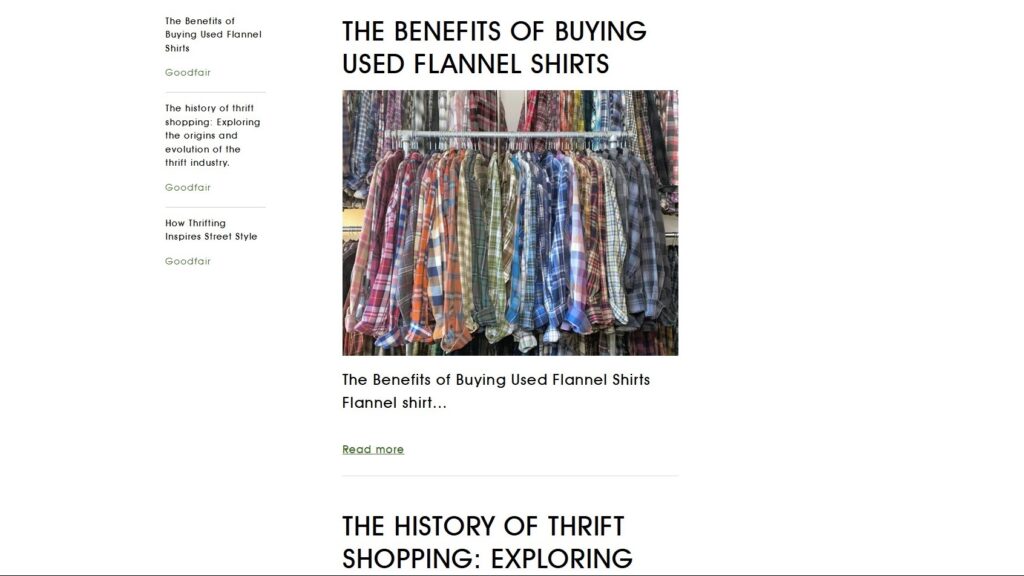
How to Choose Keywords That Actually Rank
Before a single word is written, successful content starts with one thing: smart keyword research. For ecommerce websites, this isn’t just about picking high-volume keywords—it’s about choosing keywords that are realistically rankable and deeply aligned with buyer intent.
Keyword research guides everything from blog topics to video scripts and email subject lines. It helps you:
- Understand what your audience is searching for
- Align content with different stages of the buying journey
- Uncover gaps your competitors aren’t covering
Without it, writing content no one is looking for or chasing terms that are nearly impossible to rank for.
How to evaluate Keyword Difficulty and Search Volume
Not all keywords are created equal. Two of the most important metrics to evaluate when choosing a target keyword are:
- Search Volume (SV): How often a keyword is searched monthly. High volume = high potential traffic, but also high competition.
- Keyword Difficulty (KD): How competitive the keyword is. A KD of 0–30 is ideal for smaller or mid-sized ecommerce brands looking to rank quickly.
Look for keywords with SV between 100–1,000 and KD under 30–35, especially if your site doesn’t have a high domain rating yet.
Search Intent Mapping
Search intent refers to the reason behind a user’s query, and it’s essential to match your content format to their mindset.
There are four primary types of intent:
| Intent Type | What the User Wants | Typical Keywords | Best Content Formats | Ecommerce Goal | Example |
| Informational | To learn or understand something | how to, guide, tips, what is, benefits | Blog posts, guides, explainer videos, infographics | Attract & educate top-of-funnel visitors | How to choose running shoes |
| Navigational | To find a specific site or brand | brand name, product line, reviews, login | Brand landing pages, review pages, FAQs | Dominate brand SERP & reinforce trust | Gymshark seamless leggings review |
| Commercial | To compare options & evaluate | best, top, vs, compare, review, alternatives | Buying guides, product roundups, comparison blogs | Drive high-intent traffic to product pages | Best supplements for runners |
| Transactional | To make a purchase now | buy, discount, coupon, near me, free shipping | Product pages, promo pages, cart-ready content | Convert traffic into customers | Buy vegan protein powder online |
For ecommerce content, prioritize commercial and transactional keywords in product roundups and buying guides, while using informational queries for top-of-funnel blog content to build trust.
You don’t have to guess what people are searching for. These tools help you find high-intent, low-competition keywords:
- Ahrefs – Best-in-class for KD, backlink profiles, and SERP analysis
- SEMrush – Great for competitor keyword gaps and content planning
- Ubersuggest – Affordable, easy-to-use tool with KD, SV, and content ideas
- AnswerThePublic – Visualizes real questions users ask based on keyword stems
Use these tools to group related keywords into content clusters. This improves topical authority and SEO depth.
Best Practices for Ecommerce Blogging
Creating a blog that actually drives revenue requires more than just writing about your products—it demands strategic, SEO-smart, and user-focused content. Below are proven best practices to help eCommerce brands build blogs that rank and convert:
1. Product-Focused Blog Posts
Product-centric blog content should go beyond promotional blurbs. The goal is to provide context, education, and use cases that naturally lead readers to your product pages.
Pro tips:
- Highlight benefits, not just features. Use real-world examples of how your product solves a problem.
- Integrate customer reviews, testimonials, or case studies to build trust.
- Add internal links to product pages with compelling CTAs like “Shop now” or “Explore all colors.”
- Use original photography or lifestyle images showing the product in use.
Example: A beauty brand might write “How to Build a Skincare Routine with Just 3 Products”—subtly featuring its own products with actionable advice.

2. Buying Guides and Comparison Posts
These posts are highly valuable to shoppers in the decision phase and can position your brand as an unbiased, helpful advisor.
Here’s what you should do:
- Use clear subheadings (e.g., “Top Features,” “Who It’s For,” “Pros and Cons”) for easy scanning.
- Include comparison tables or bullet-point breakdowns to simplify complex options.
- Answer key buyer questions like “Which is better for [specific need]?” or “What should I look for in a [product type]?”
- Link to all the products you mention, and highlight “editor’s picks” to guide conversions.
Example: “Electric Scooter Showdown: Segway vs. GoTrax vs. Unagi” could include side-by-side specs and direct product links.
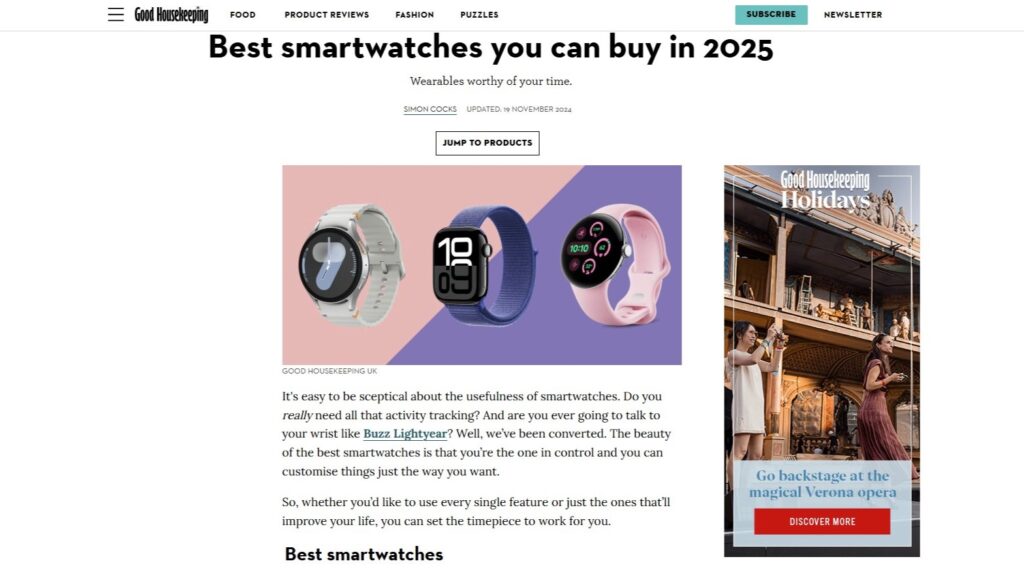
3. Seasonal and Trend-Based Content
Timely blog posts are great for capturing short-term spikes in traffic and riding on trends your audience already cares about.
Here’s how:
- Publish content ahead of key retail moments (e.g., Black Friday, Valentine’s Day, Back to School) to allow indexing time.
- Monitor TikTok, Instagram, and Google Trends to stay ahead of emerging topics in your niche.
- Use urgency-based CTAs like “Limited Edition” or “Only This Week” to create FOMO.
- Repurpose seasonal blog content yearly with updated info and refreshed graphics.
Example: A home decor store could post “Top Home Office Trends for Fall 2025”—showcasing new arrivals styled in seasonal settings.
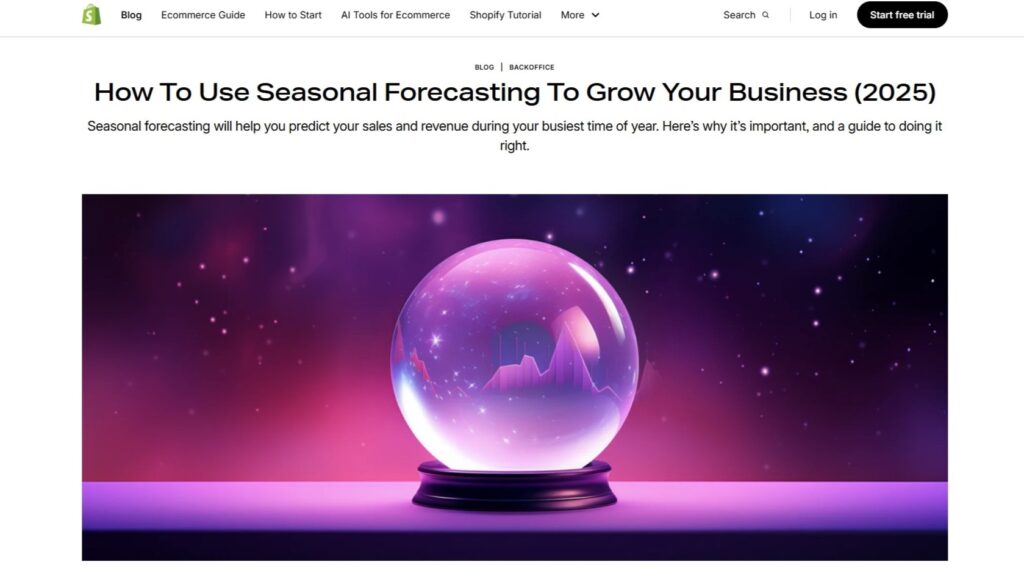
4. SEO Optimization Tips
Even the best content won’t rank without SEO fundamentals in place. Here’s how to ensure your blog posts are built for visibility:
- Internal Linking: Link naturally to related blog posts, product categories, and high-intent pages. Use keyword-rich anchor text (e.g., “ergonomic desk chair for home office”).
- Meta Tags: Craft unique meta titles and meta descriptions for each post. Keep titles between 50–60 characters and descriptions under 155 characters. Include primary keywords naturally.
- Schema Markup: Use FAQ or How-To schema (especially for tutorials and buying guides) to earn rich snippets in search results.
- Image Optimization: Compress all images under 100kb, use WebP format, and write descriptive filenames (e.g., “office-desk-setup-ideas.webp”). Alt text should describe the image and include a relevant keyword.
Checklist items to include:
☐ Keyword in title, URL, meta description, and first 100 words
☐ Meta title (50–60 characters), meta description (130–155 characters)
☐ Use internal links with keyword-rich anchor text
☐ Add schema markup (How-To, FAQ)
☐ Optimize images (WebP, <100kb, keyword in filename + alt-text)
☐ Use H2/H3 subheadings with secondary keywords
☐ One image every 350 words
☐ Include a clear CTA (Call-to-Action)
Design Notes:
☐ Size: Landscape (1200x628px)
☐ Format: WebP or JPEG
☐ Color Scheme: Match Wgentech brand (if applicable)
☐ Alt Text: “SEO checklist for ecommerce blog optimization”
Tools and Examples
To streamline your ecommerce blogging workflow—and get better results—it’s smart to use purpose-built tools for every stage of content creation and optimization. Below is a breakdown of recommended tools categorized by task:
1. Keyword Research & Planning: Finding the right keywords is the foundation of blog success. Use these tools to uncover high-intent topics and search volume: Google Keyword Planner, Ahrefs, SEMrush.
2. On-Page SEO Optimization: Use these platforms to ensure your blog content is fully optimized before publishing: Surfer SEO, Yoast SEO (WordPress), RankMath.
3. Schema & Technical Enhancements: Add structured data to enhance visibility on search engines: Schema Markup Generator, Google’s Rich Results Test, Schema Pro (WordPress Plugin).
Video Marketing & Product Demos
Video is no longer optional in ecommerceit’s essential. Landing pages with video can increase conversion rates by up to 80%, while eCommerce shoppers are 64% more likely to buy after watching a product video.
Here’s why video matters:
- Increases time on page and conversion rates: Videos reduce bounce rates by immediately engaging visitors. They offer quick insights that keep users scrolling, clicking, and—most importantly—buying.
- Helps customers understand products visually: Especially for apparel, gadgets, or home goods, videos bridge the sensory gap of online shopping. They answer the unspoken “how does this really look or work?” questions that product images alone can’t address.

Types of Videos to Create
To get the most from video marketing, your content needs to match your audience’s intent and your product’s complexity. Here are high-performing formats you can start with:
- Product Demonstrations: Show the product in action. Highlight features, usability, and value through real-life scenarios. Keep it under 2 minutes for maximum retention.
- Unboxing & Behind-the-Scenes: These build transparency and brand affinity. Unboxings add excitement and social proof; behind-the-scenes videos humanize your brand and give a “look inside” your process or team culture.
- Explainer Videos and Tutorials: Ideal for products with learning curves or multifunctional use. Show how to assemble, customize, or troubleshoot your products. These videos are also perfect for reducing returns and increasing customer satisfaction.
Pro Tip: Include closed captions for accessibility and to capture viewers who watch without sound—especially on mobile.
Where to Host and Share Videos
To maximize reach and performance, think multi-platform:
- YouTube for discovery: YouTube is the second-largest search engine and a great place for evergreen video content. Optimize titles and descriptions with keywords to boost discoverability.
- Embed on product pages: Videos on product detail pages help clarify information and reduce buyer hesitation. Ideally, place them above the fold or near the “Add to Cart” button.
- Share on social platforms: Use short-form versions of your videos for Instagram Reels, TikTok, and Facebook. These platforms favor native video and can drive both awareness and engagement when paired with trending sounds or hashtags.
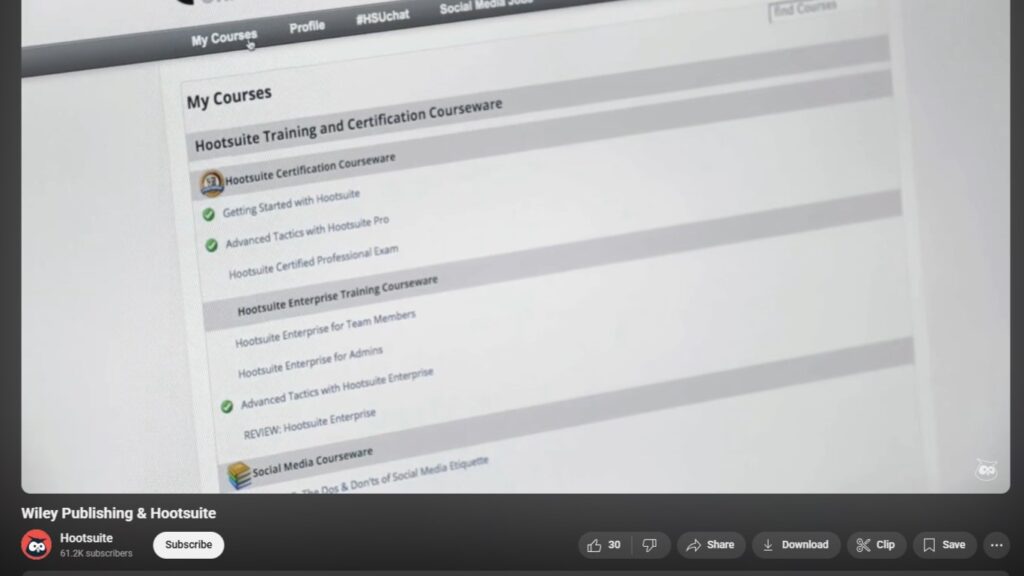
Email Marketing Sequences That Convert
Email remains one of the most powerful and cost-effective channels in content marketing for ecommerce websites. But to move the needle, eCommerce brands must go beyond one-off newsletters and create automated sequences that guide users through the buyer journey, build loyalty, and recover lost revenue. Let’s explore the key sequences every ecommerce store should have—and how to make them convert.
Cart Abandonment Flows
Cart abandonment is one of the biggest leaks in the ecommerce funnel. On average, nearly 70% of shopping carts are abandoned, often due to distractions, high shipping costs, or lack of urgency.
Key elements of an effective cart abandonment sequence:
- Timely reminders: The first email should go out within an hour, followed by one or two additional emails over the next 24–48 hours.
- Create urgency: Highlight low inventory or limited-time offers to motivate action.
- Offer incentives: Include a small discount or free shipping in the final reminder to close the sale.
- Showcase product images: Remind customers exactly what they left behind, with clickable product thumbnails.
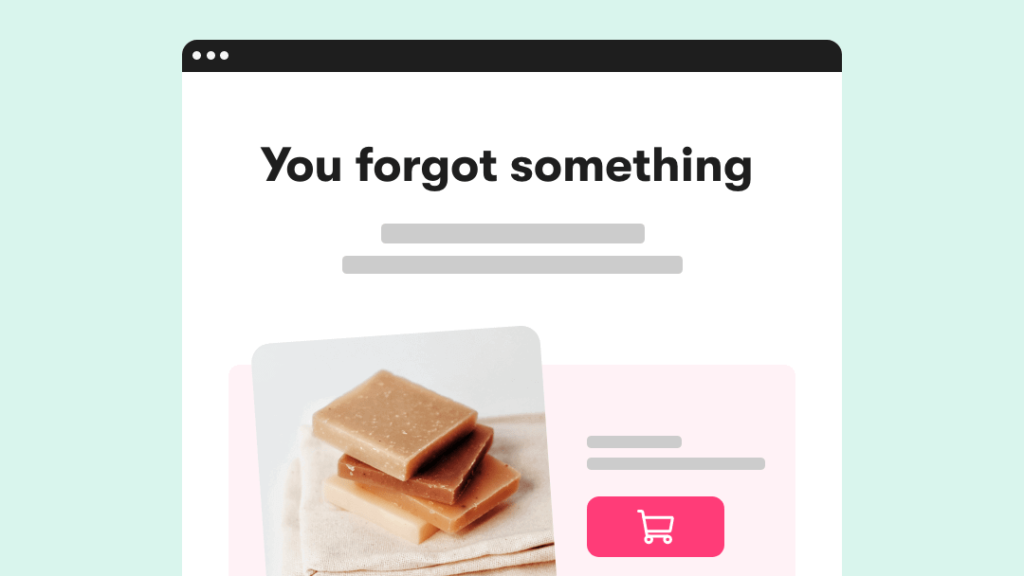
For example, this can be a high converting email flow:
- Email 1: Gentle Reminder (1 hour later)
Subject Line: Forget something? Your cart’s waiting for you
- Email 2: Value Reinforcement (12–24 hours later)
Subject Line: Still thinking it over? Here’s why customers love [Product Name]
- Email 3: Urgency + Incentive (48 hours later)
Subject Line: Last chance! Get 10% off before your cart expires
Post-Purchase Sequences
Your relationship with a customer shouldn’t end at checkout. Post-purchase emails are an opportunity to build long-term loyalty and increase customer lifetime value.
Best practices:
- Build loyalty: Send a thank-you email with a personal touch or brand story to show appreciation.
- Ask for reviews: Timing is key—send this a few days after delivery when the product has been experienced.
- Cross-sell related products: Recommend complementary items based on the initial purchase (e.g., “Bought running shoes? Here are our best-selling socks.”)
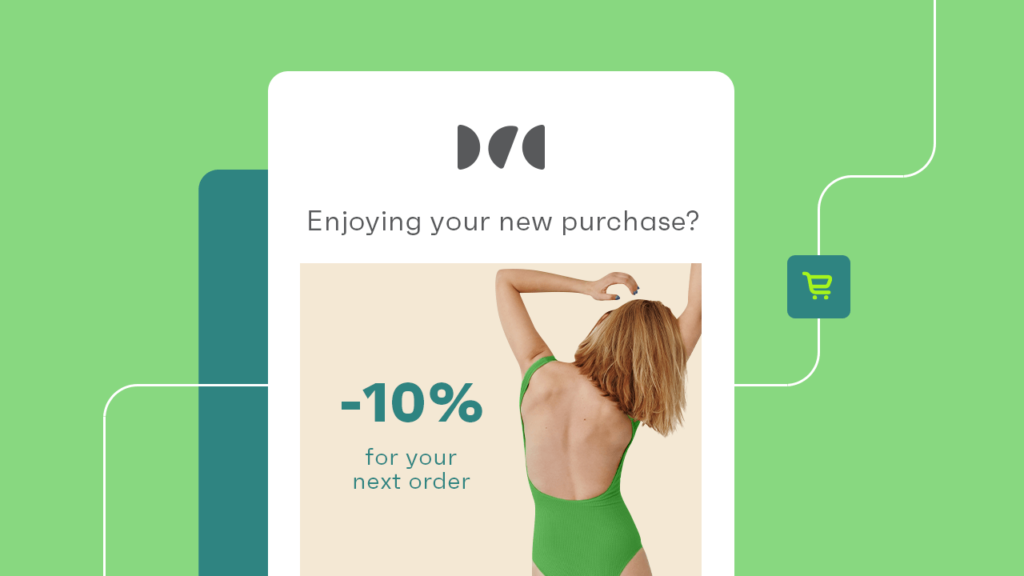
- Email 1: Thank You & Brand Welcome (Immediately after purchase)
Subject Line: You made our day! Welcome to the [Brand Name] family
- Email 2: Product Education (2–3 days post-purchase)
Subject Line: Tips to get the most out of your new [Product Name]
- Email 3: Review Request (5–7 days post-delivery)
Subject Line: Love it? Tell us what you think!
- Email 4: Cross-Sell Offer (7–10 days later)
Subject Line: Complete your look: Recommended just for you
These sequences not only nurture the customer relationship but also increase repeat purchase rates.
Re-Engagement Campaigns
Inactive subscribers don’t have to be a lost cause. Re-engagement sequences help you reconnect with cold leads before they churn.
How to win them back:
- Use dynamic content: Tailor recommendations based on past behavior, browsing history, or purchase gaps.
- Make it personal: Use the customer’s name, highlight previous purchases, and use a conversational tone.
- Incentivize return: Offer a unique promo or exclusive access to a new product line.
- Test subject lines: Try emotional or curiosity-driven hooks like “We miss you—here’s 10% off to come back.”
Reactivation flows aim to re-capture lapsed customers or subscribers with personalized messaging and strategic offers. Here’s an example:
- Email 1: Personal Reconnect (30–60 days of inactivity)
Subject Line: Still here? We’ve missed you, [First Name]
- Email 2: Product Tease or New Arrival (3 days later)
Subject Line: Hot drop: New arrivals we think you’ll love
- Email 3: Incentive Offer (7 days later)
Subject Line: Here’s 15% off—just for coming back
- Email 4: Win-Back or Exit Survey (Final touchpoint)
Subject Line: Still not feeling it? Tell us how we can do better
Cleaning up your list and reactivating dormant users helps maintain high deliverability and engagement rates.
Tools to Use
Choosing the right email marketing platform can make or break your automation efforts. Here are the top options for ecommerce:
- Klaviyo – Built specifically for ecommerce with deep Shopify and Magento integrations. Excellent for automation workflows, newsletter campaigns, and personalization.
- Mailchimp – User-friendly and suitable for smaller stores looking for quick setup and pre-built automation templates.
- Omnisend – Ideal for omnichannel campaigns (email + SMS), with drag-and-drop workflows and built-in product recommendations.
Each platform offers powerful automation features and analytics to help you monitor open rates, click-throughs, and sales attribution.
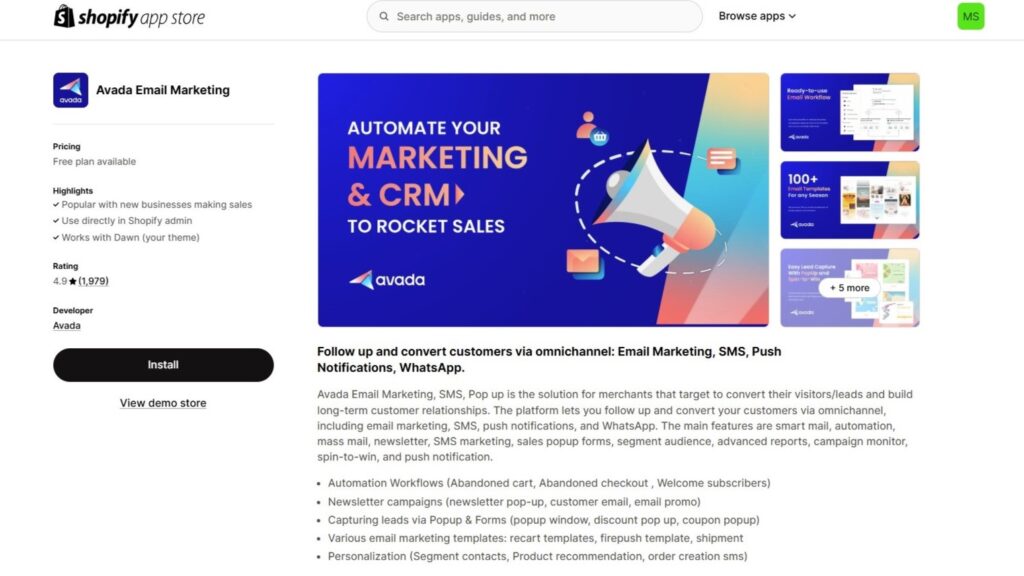
Social Media Marketing for Ecommerce Brands
Social media plays a critical role in ecommerce content marketing. It’s where brands build personality, foster trust, and convert followers into loyal customers. But each platform has its own strengths—and understanding how to tailor your content accordingly is key to success.
Channel Breakdown
Not every social channel serves the same purpose. Ecommerce brands must be strategic about where and how they show up.
- Instagram & TikTok: These platforms are ideal for visual storytelling. Use them to showcase products in real-life contexts, hop on trends, and build emotional connections. TikTok in particular excels with unpolished, authentic content, while Instagram supports more curated and shoppable experiences.
- LinkedIn: Best for B2B ecommerce brands or suppliers. Share industry insights, product development stories, or behind-the-scenes business decisions to position your brand as a thought leader and connect with partners or wholesale buyers.
- Facebook: Still highly valuable for retargeting and community building. Use it to run dynamic product ads and engage with niche groups that reflect your target demographic.
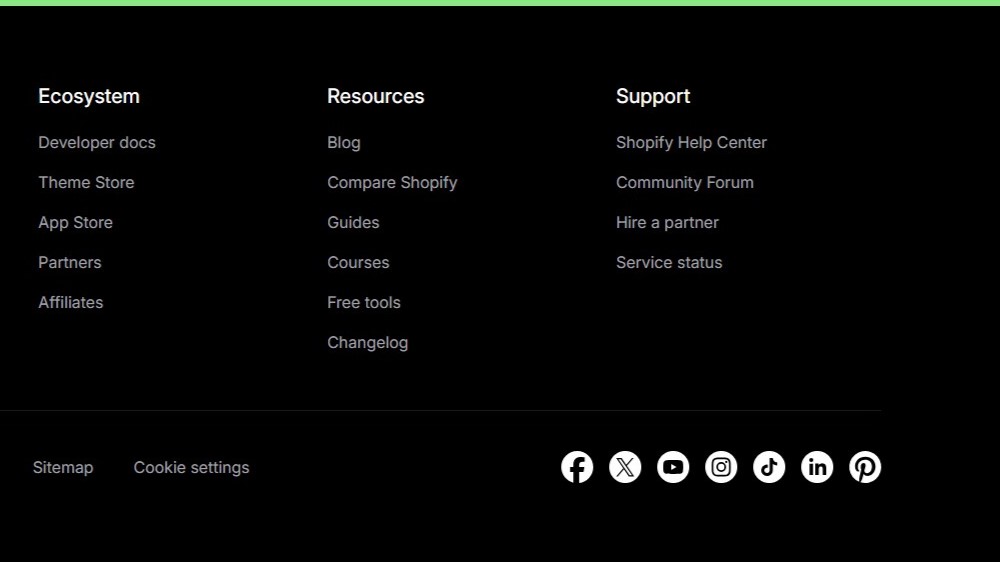
Types of Social Content
To build awareness and drive conversions, your content must both entertain and inform. Here are the best-performing formats for ecommerce:
- Reels & TikToks: Short-form video is king. Showcase products in action, share quick tips, or highlight user-generated content. Keep it fast-paced, trendy, and value-packed.
- User Testimonials: Social proof builds trust. Repost customer videos, reviews, or influencer shoutouts to reinforce your credibility.
- Flash Sale Promotions: Create urgency with limited-time offers and countdowns. Pair visuals with action-oriented captions and a clear CTA.
- Behind-the-Scenes Stories: Give followers a peek into your process—how products are made, who’s on your team, or what your workspace looks like. Transparency fosters brand loyalty.
Pro Tip: Add text overlays or captions to all videos for accessibility and improved engagement, especially on platforms where sound is off by default.
Tips for Engagement & Growth
Growing your presence on social media isn’t just about showing up—it’s about showing up strategically. Here’s how to boost engagement and build a loyal following:
- Use trends & hashtags: Jump on relevant audio trends, memes, or challenges while staying true to your brand voice. Research niche-specific hashtags for discoverability.
- Collaborate with creators/influencers: Micro-influencers (under 100K followers) often deliver higher engagement and authenticity. Consider product gifting or affiliate partnerships to amplify reach.
- Consistent posting schedule: Stick to a regular cadence, whether it’s daily stories or 3 posts per week. Use scheduling tools like Later or Buffer to plan ahead and stay visible in-feed.
User-Generated Content & Community Engagement
In a digital world saturated with ads and polished branding, authenticity wins. That’s why user-generated content (UGC) has become a cornerstone of content marketing for ecommerce websites. When customers become your content creators, you not only increase engagement—you build a community that sells for you.
Why UGC Builds Trust
UGC is powerful because it’s rooted in social proof. People trust people more than brands—and that trust directly translates into sales.
- Social proof drives conversion: Studies show that consumers are 2.4x more likely to say UGC is more authentic than brand-created content. Seeing real people using your products validates their quality and value.
- Reduces content production costs: Letting your customers co-create content naturally fills your calendar without stretching your creative team. It also provides variety—from photos and testimonials to unboxings and reviews.
Plus, platforms like Instagram, TikTok, and YouTube thrive on this kind of grassroots storytelling.
How to Encourage UGC
You can’t always wait for customers to post about you—you have to create the conditions for it to happen.
- Create branded hashtags: Make it easy for customers to tag their content. Promote hashtags in your packaging, email footers, and on your site. Think of something short, catchy, and memorable (e.g., #MyGlowUpWithLunaSkin).
- Incentivize with giveaways: Reward those who share content with a chance to win a prize or receive store credit. This creates momentum and a snowball effect—especially when paired with influencer amplification.
- Feature UGC in product galleries and emails: Highlight real customers on your product pages and in marketing emails. Not only does this add trust signals, but it also builds emotional loyalty by showing that you value your customers.
Building a Community Around Your Brand
UGC is just the start. The next step is fostering true community, where your customers feel seen, heard, and involved.
- Use forums, social media groups, or Discord communities: Create exclusive spaces where customers can ask questions, share results, and connect with others. These spaces often generate content ideas, product feedback, and deeper brand loyalty.
- Create content specifically for loyal customers: Send early access sneak peeks, behind-the-scenes content, or educational resources only to your top buyers.
- Launch ambassador programs: Identify superfans and turn them into brand advocates. Offer exclusive perks, early access, or commissions for referrals. Ambassadors don’t just bring in new customers—they help you stay top-of-mind.

Conclusion
Content marketing for ecommerce websites isn’t just a buzzword—it’s a long-term growth engine that helps brands attract, engage, and convert customers across the entire buyer journey.
While each of these tactics is powerful on its own, the real magic happens when you execute them consistently and measure performance over time. The brands that win in today’s ecommerce landscape are the ones that treat content not as an afterthought but as a core business strategy.
Wgentech offers expert eCommerce Optimization and Marketing Services designed to help brands like yours grow through smart, scalable content solutions. Get in touch with us to start turning content into conversions.




